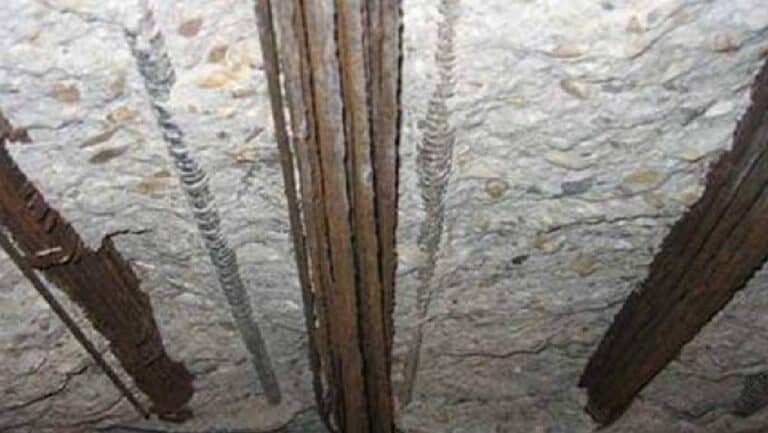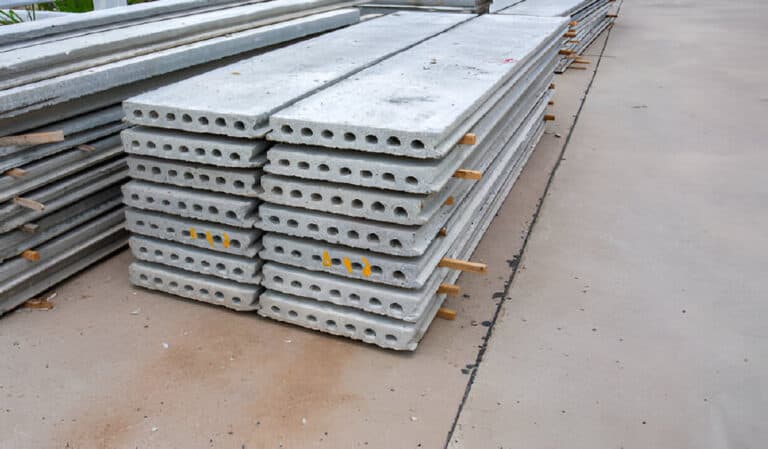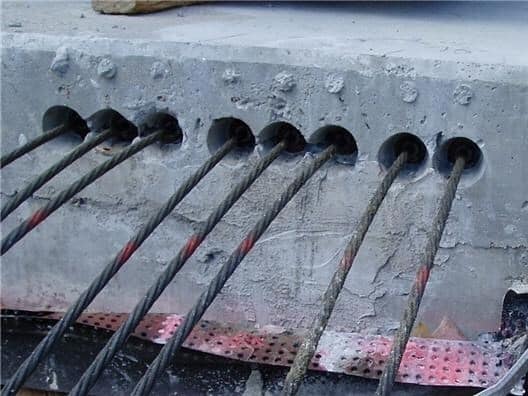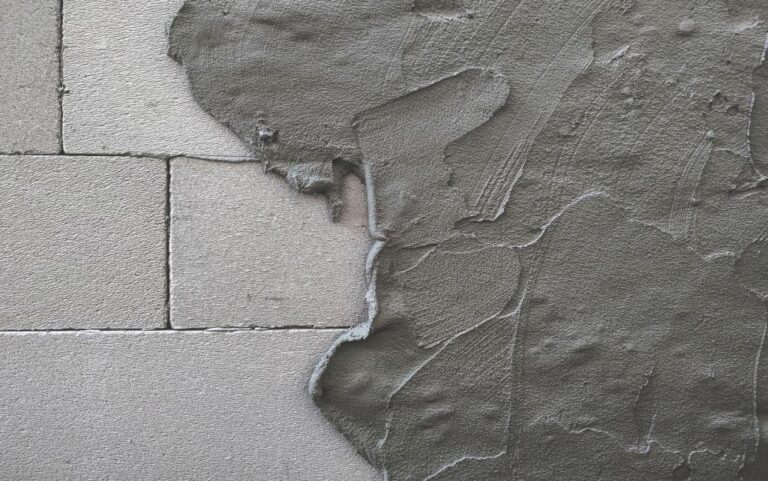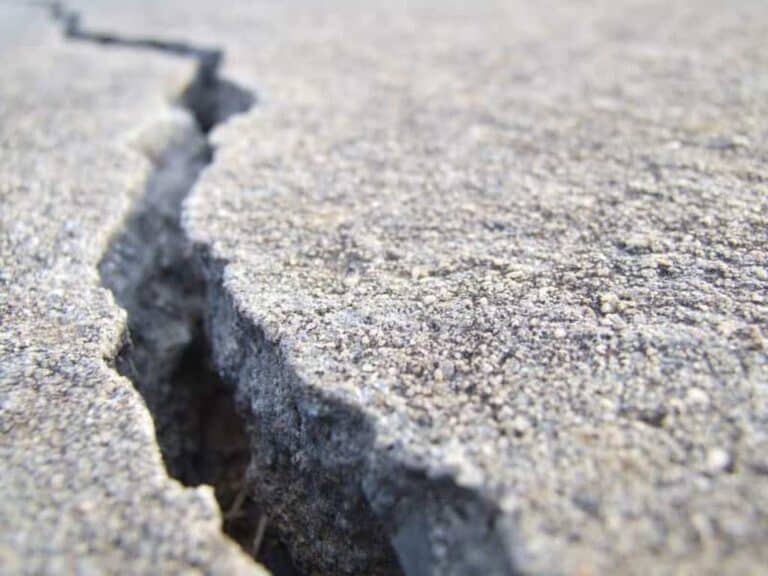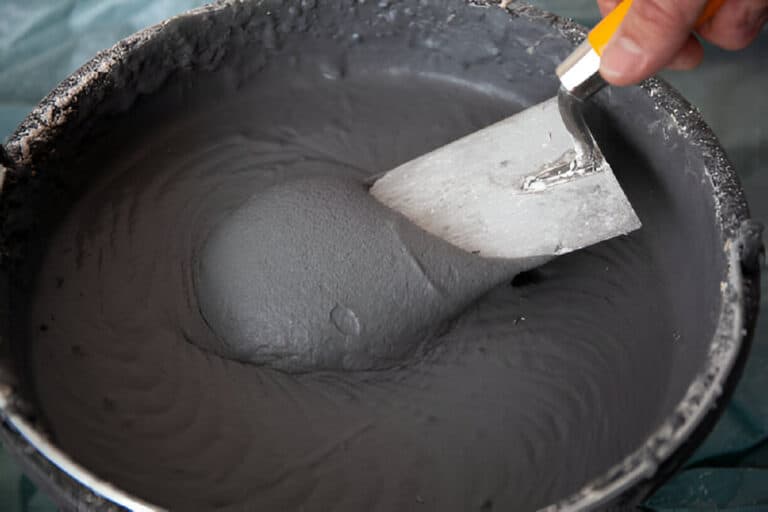Will Joint Compound Stick to Concrete? How to Achieve a Smooth Finish

If you are considering a home renovation project that involves repairing or finishing walls, you may be wondering whether joint compound will adhere to concrete. Joint compound is a popular material used for filling and smoothing joints and seams between drywall panels, but it is not specifically designed for use on concrete surfaces.
Will joint compound stick to concrete? The answer is that joint compound can indeed stick to concrete surfaces, but there are several factors that can affect its adhesion.
In this article, we’ll explore those factors and provide tips for preparing and applying joint compound to concrete surfaces for the best possible results. In addition to that, we’ll cover everything you need to know about using joint compound on concrete surfaces, from the preparation to the application and the drying process.
So, let’s dive in and learn how to achieve a smooth finish with joint compound on concrete.
Understanding Joint Compound
Before we delve into the question of whether joint compound will adhere to concrete, it is important to understand what joint compound is and how it works.
Joint compound, also known as drywall mud, is a gypsum-based material that is used to fill gaps and seams between drywall panels. It is typically sold in powder form and must be mixed with water before use. Joint compound is easy to work with, dries quickly, and can be sanded smooth to create a seamless surface.
There are different types of joint compound available, including all-purpose, lightweight, and setting-type. All-purpose joint compound is the most commonly used and can be used for a variety of applications, including filling and smoothing joints and seams. Lightweight joint compound is designed for use on ceilings and other areas where weight is a concern, while setting-type joint compound dries more quickly and is ideal for larger jobs.
Will Joint Compound Stick to Concrete?
Now, back to the question at hand: can joint compound stick to concrete? The short answer is yes, but there are some important caveats to keep in mind. Joint compound is not specifically designed for use on concrete surfaces, which means that it may not adhere as well as it would on drywall. However, there are steps you can take to increase the likelihood of successful adhesion.
The key to getting joint compound to stick to concrete is to properly prepare the surface beforehand. Concrete surfaces are often porous and may have a rough texture, which can make it difficult for joint compounds to adhere. To improve adhesion, you will need to clean the surface thoroughly and apply a bonding agent.
Factors Affecting Adhesion Joint Compound to Concrete
The ability of joint compound to adhere to a concrete surface depends on several factors, including the porosity of the concrete, its moisture content, the presence of contaminants or sealers on the surface, and the type of joint compound being used.
1. Porosity of Concrete Surface
Concrete is a porous material, which means that it can absorb moisture and other substances. However, this porosity can also make it difficult for joint compounds to adhere properly, especially if the surface is rough or uneven. To ensure proper adhesion, it’s important to properly prepare the surface, as we’ll discuss in more detail later in this article.
2. Moisture Content of the Concrete
Another factor that can affect the adhesion of joint compound to concrete is the moisture content of the surface. If the concrete is too wet or too dry, the joint compound may not adhere properly. Ideally, the surface should be dry to the touch but not completely devoid of moisture. If the surface is damp, allow it to dry completely before applying joint compound.
3. Presence of Contaminants or Sealers on the Concrete Surface
The presence of contaminants or sealers on the concrete surface can also affect the ability of joint compounds to adhere properly. Common contaminants include oil, grease, and dust, while common sealers include acrylic, epoxy, and urethane. To ensure proper adhesion, the surface must be thoroughly cleaned and any sealers removed before applying joint compound.
4. Type of Joint Compound Used
Finally, the type of joint compound being used can also affect its ability to adhere to concrete surfaces. Generally speaking, lightweight joint compound is more suitable for concrete surfaces than heavier, all-purpose joint compound. This is because lightweight joint compound is more flexible, which allows it to move with the concrete surface as it expands and contracts over time.
Preparing the Concrete Surface
To ensure proper adhesion of joint compound to a concrete surface, it’s essential to prepare the surface properly. This involves several steps, including cleaning the surface, smoothing it out, and applying a bonding agent or primer.
Cleaning the Surface
The first step in preparing a concrete surface for a joint compound is to clean it thoroughly. This involves removing any contaminants, such as oil, grease, or dust, that may be present on the surface. The surface can be cleaned using a variety of methods, including power washing, sandblasting, or using a degreaser or other cleaning solution.
Smoothing the Surface
Once the surface has been cleaned, it’s important to smooth it out as much as possible. This can be done using a concrete grinder or sander, or by filling in any cracks or holes with a concrete patching compound. The goal is to create a smooth, even surface that will allow the joint compound to adhere properly.
Applying a Bonding Agent
Once the surface is clean and dry, you will need to apply a bonding agent. A bonding agent is a material that helps to improve adhesion between two surfaces. There are different types of bonding agents available, including epoxy, latex, and acrylic-based products.
To apply a bonding agent, first, mix the agent according to the manufacturer’s instructions. Then, use a brush or roller to apply a thin coat of the agent to the concrete surface. Allow the agent to dry completely before applying the joint compound.
Applying Joint Compound to Concrete
Once the bonding agent has dried, you can apply a joint compound to the concrete surface. Use a taping knife to spread the joint compound over the surface, starting at the center and working your way outward.
Apply a thin coat of joint compound at first, and then gradually build up the thickness as needed. Smooth the surface with the taping knife, and then allow the joint compound to dry completely.
After the joint compound has dried, you can sand the surface lightly to remove any bumps or imperfections. If necessary, you can apply a second coat of joint compound to achieve a smooth finish.
Techniques for Applying Joint Compound
There are several techniques that can be used for applying joint compound to a concrete surface, depending on the desired finish. These include:
- Troweling: This involves spreading the joint compound evenly over the surface using a trowel or putty knife.
- Spraying: This involves using a spray gun to apply the joint compound in a fine mist over the surface.
- Roll-on: This involves using a paint roller to apply the joint compound over the surface in a thick, even layer.
Recommended Tools for Applying Joint Compound
The tools used for applying joint compound to a concrete surface will depend on the technique being used. However, there are several tools that are recommended for the best results, including:
- Trowel or putty knife: These tools are used for spreading the joint compound evenly over the surface.
- Sandpaper or sanding sponge: These tools are used for smoothing out the joint compound after it has dried.
- Spray gun: This tool is used for applying the joint compound in a fine mist over the surface.
- Paint roller: This tool is used for applying the joint compound in a thick, even layer over the surface.
Applying Joint Compound in Multiple Layers if Necessary
Depending on the desired finish and the condition of the concrete surface, it may be necessary to apply the joint compound in multiple layers. This can be done by allowing each layer to dry completely before applying the next layer, and sanding the surface in between layers to create a smooth finish.
Drying and Sanding Joint Compound on Concrete
Once the joint compound has been applied, it’s important to allow it to dry completely before sanding. The drying time will depend on the type of joint compound being used as well as the temperature and humidity of the environment.
Once the joint compound has dried, it should be sanded using fine-grit sandpaper or a sanding sponge. This will help to create a smooth, even finish that will be more visually appealing and more resistant to damage over time.
Tips for Successful Joint Compound Application on Concrete
To ensure the best results when using joint compound on concrete surfaces, keep the following tips in mind:
- Always clean the surface thoroughly before applying joint compound.
- Use a bonding agent to improve adhesion between
- Apply joint compound in thin layers and gradually build up the thickness as needed.
- Use a taping knife to spread the joint compound evenly and smoothly.
- Allow the joint compound to dry completely before sanding or applying a second coat.
- Consider using a setting-type joint compound for larger jobs or areas that require a quicker drying time.
- Always follow the manufacturer’s instructions for the joint compound and bonding agent you are using.
Alternatives to Joint Compound
If you are hesitant to use joint compound on a concrete surface or if you have tried and failed to get it to stick, there are alternative materials you can use. One option is a concrete patching compound, which is specifically designed for use on concrete surfaces. These products are easy to use and can be applied in a similar manner to joint compounds.
Another option is a cement-based skim coat, which can be used to create a smooth surface on concrete walls.
There are other materials you can use to achieve a smooth finish on concrete surfaces. For example, some contractors use epoxy coatings to create a durable, high-gloss finish on concrete floors. These coatings can be customized with different colors and textures to create a unique look, and they can be applied over existing concrete surfaces.
Conclusion
In conclusion, joint compound can stick to concrete surfaces, but it requires proper preparation and application techniques. By cleaning the surface thoroughly, applying a bonding agent, and using thin layers of joint compound, you can achieve a smooth and seamless finish.
However, if you prefer not to use joint compound or have had difficulty getting it to adhere to concrete, there are alternative materials you can use. Ultimately, the choice of material will depend on the specific needs of your project and the surface you are working with.

